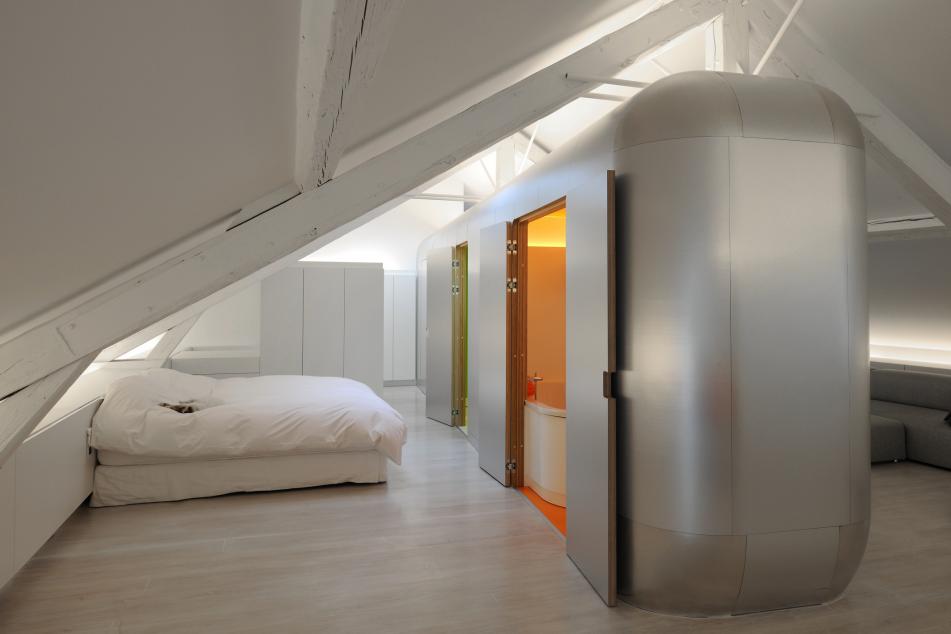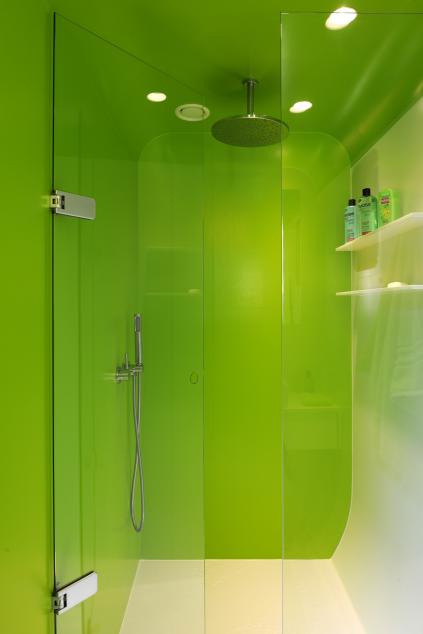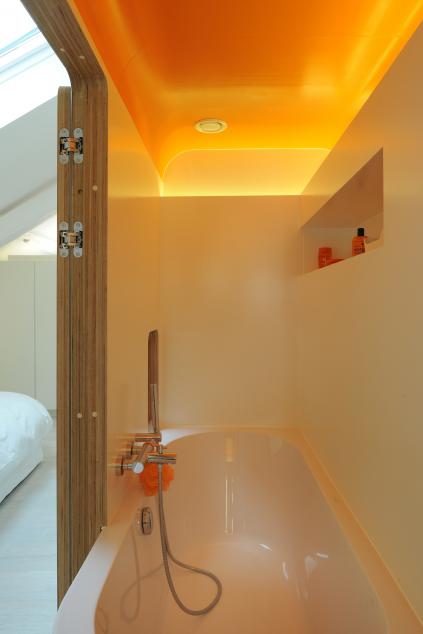Description
Reinterpreting the loft
The Kempart loft project emerged from a meeting between Daniel Dethier and a client, who was passionate about precision engineering. It demonstrates how industrial spaces can be transformed into housing without becoming locked into stereotypes.
Detail and accuracy
We were fortunate to have a committed and receptive client who was fascinated by precision engineering. This allowed us to apply our research into a loft's reinterpretation, and to integrate a technically advanced architectural object. Our approach was, quite naturally, based on the client's profile rather than the site's historical nature – as it does not present any heritage value whatever.
On the cutting edge
The movement to transform small and medium-sized industrial sites into housing units began in the 1970s. Often, however, such renovations were superficial in nature – a passé, rough-hewn treatment for a lifestyle out of synch with contemporary expectations. Most observers are aware of this, yet preconceptions about how "lofts" should be designed are as deep-rooted as they are pseudo-contemporary. Hence, getting off the beaten track and proposing bold aesthetic choices combined with cutting-edge finishings was more difficult in this context than for other types of projects. For the Kempart loft, the concept was straightforward: to create a living space for a couple with no children in an abandoned industrial bakery. Beyond the basic technical requirements, our proposal was mainly focused on the space's layout, function and sensitivity.
An aluminium pod
To begin, we opened the space up as much as possible, removing the tie beams and strengthening the rafters with metal plates set in the ridge beam. The resulting 154 sq. m open area was structured by the introduction of a rounded modular unit housing two bathrooms, storage areas, a toilet and the heating and ventilation systems.
The modular unit divides the interior space and provides for various functions while creating a range of ambiences. Beginning with the entrance, the space provides zones for the hall, office, lounge, kitchen, dining room, bedroom and dressing room. The lounge area is located on the southern side of the space, while the bedroom is to the north.
The modular unit has a unique design; its silhouette, aluminium cladding and careful attention to detail were all inspired by the Airstream trailer's aerodynamic aesthetic. We commissioned artist Jean Glibert to select the bathroom areas' saturated colours, which can be glimpsed through three porthole windows that can be rendered opaque. These variegated tonal elements energise the interior architecture, which is predominantly white, a colour that reflects the indirect light and emphasises the unit's brushed aluminium skin. The pure lines and tonal range produce a feeling of weightlessness, reinforced by the understated, high-tech furnishings, which were also commissioned. Particular attention was paid to the placement of the floor-to-ceiling windows and the to the views from the lounge area – one can look down a street and out towards the spacious terrace, whose surface area is equivalent to two-thirds of the interior space. The terrace almost doubles the living space and offers the inhabitants direct contact with the neighbourhood.
Technical sheet
Transformation of a former industrial site into a loft.
Localization
Longitude: 5° 33' 46.404" E
- ‹ Previous
- Suivant ›


























